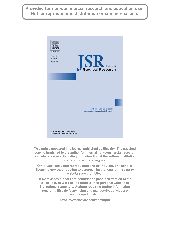摘要
Background. A marked deficiency of glutamine in clinical critical illness is correlated with mortality in the intensive care unit. Though intestinal glutamine transport was reported to be impaired in late sepsis, we hypothesized that there might be a different alteration in the early stage, with differential effects on the Na(+)-dependent glutamine transporters B(0)AT1, ATB(0,+), and ATA2. Materials and
Methods. Sepsis was induced by cecal ligation and puncture or lipopolysaccharide intraperitoneal injection in Sprague Dawley rats, and the samples were collected at 0, 2, 6, 12, 24h. Small intestinal brush border glutamine transport was studied by a rapid filtration technique. The relative contributions of the three main transporter, B(0)AT1, ATB(0,+), and ATA2, were determined by competitive inhibition. The mRNA level of each transporter was analyzed by RT-PCR, and an extra immunohistochemistry analysis was performed to detect the localization of ATA2 protein in small intestine. Serum TNF-alpha and IL-10 concentrations were quantitated by ELISA.
Results. Intestinal glutamine transport showed a biphasic change with an early increase and a late decrease in both CLP and LPS group. The early increase of glutamine transport was mainly attributable to the increased contributions of ATA2 and ATB(0,+). The transport activities of B(0)AT1, ATB(0,+) altered mainly because of the number of transporters (mRNA level as an indicator), while turned to ATA2, the redistribution was also found to be involved. The plasma TNF- a and IL- 10 levels, especially the former, showed similar changing profiles to glutamine transport and, thus, may have relevance to it.
Conclusion. Rat intestinal glutamine transport showed an early increase and a late decrease in sepsis, and may provide some information for sepsis treatment.
- 出版日期2011-8
- 单位南京大学
